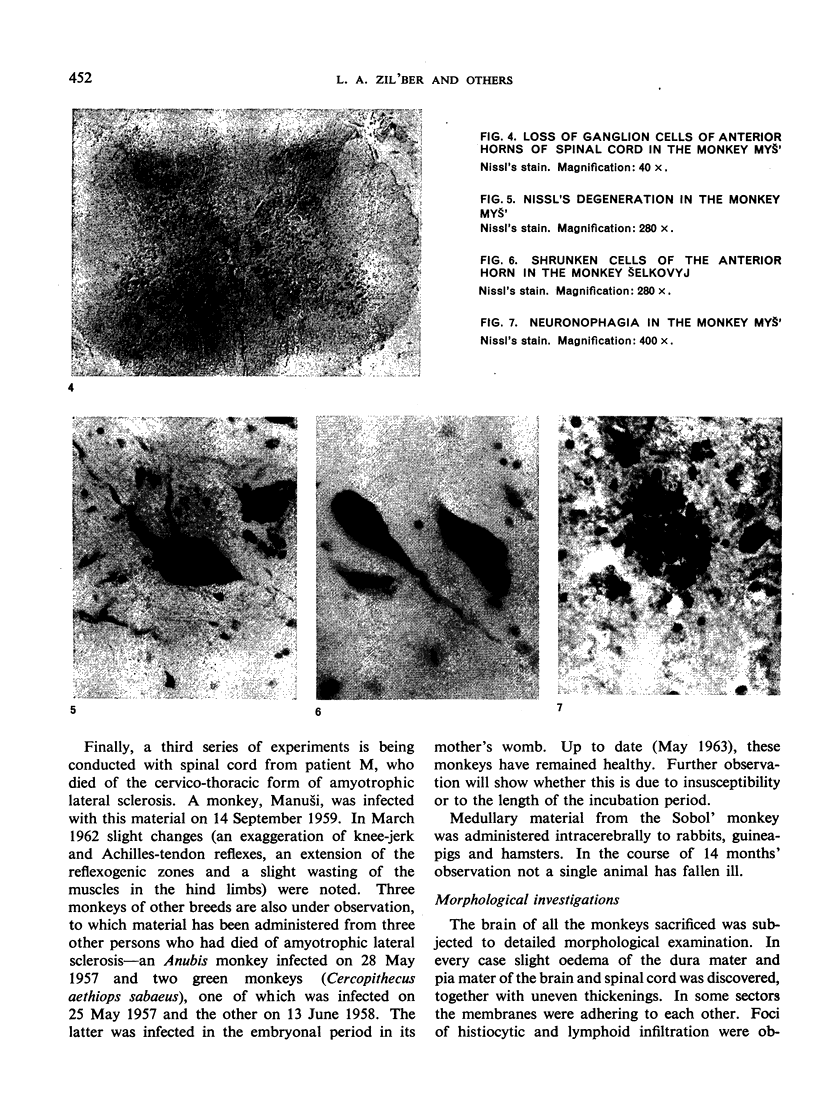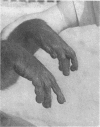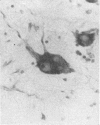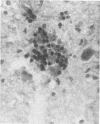Abstract
Although various hypotheses have been put out as to the etiology of amyotrophic lateral sclerosis, they do not seem to date to have been substantiated by experimental evidence. As the incidental outcome of studies on possible carcinogenic processes, the authors of this paper have obtained experimental data indicating the possibility of reproducing amyotrophic lateral sclerosis in monkeys by administering extracts from the spinal cord of persons who have died of the disease. The illness in monkeys is marked by a long incubation period, which may be of five years or more, and it is very similar to the disease in man in its clinical and pathological picture. The experimental evidence strongly suggests that this disease is of virus origin. The virus-like agent discovered has been passaged twice in monkeys without consequent attenuation; it is not pathogenic for mice and other laboratory animals.
The authors point out that, before final conclusions can be drawn, serological and immunological confirmation is required. Research is now proceeding to that end.
Full text
PDF







Images in this article
Selected References
These references are in PubMed. This may not be the complete list of references from this article.
- KURLAND L. T., MULDER D. W. Epidemiologic investigations of amyotrophic lateral sclerosis. 2. Familial aggregations indicative of dominant inheritance. II. Neurology. 1955 Apr;5(4):249–268. doi: 10.1212/wnl.5.4.249. [DOI] [PubMed] [Google Scholar]
- KURLAND L. T., MULDER D. W. Epidemiologic investigations of amyotrophic lateral sclerosis. I. Preliminary report on geographic distribution, with special reference to the Mariana Islands, including clinical and pathologic observations. Neurology. 1954 May;4(5):355–378. doi: 10.1212/wnl.4.5.355. [DOI] [PubMed] [Google Scholar]
- KURLAND L. T., MULDER D. W., WESTLUND K. B. Multiple sclerosis and amyotrophic lateral sclerosis; etiologic significance of recent epidemiologic and genetic studies. N Engl J Med. 1955 Apr 21;252(16):649–653. doi: 10.1056/NEJM195504212521601. [DOI] [PubMed] [Google Scholar]
- PARRY H. B. Scrapie: a transmissible and hereditary disease of sheep. Heredity (Edinb) 1962 Feb;17:75–105. doi: 10.1038/hdy.1962.4. [DOI] [PubMed] [Google Scholar]
- PATTISON I. H., GORDON W. S., MILLSON G. C. Experimental production of scrapie in goats. J Comp Pathol. 1959 Jul;69:300–312. doi: 10.1016/s0368-1742(59)80029-1. [DOI] [PubMed] [Google Scholar]
- PATTISON I. H., MILLSON G. C. Further observations on the experimental production of scrapie in goats and sheep. J Comp Pathol. 1960 Apr;70:182–193. doi: 10.1016/s0368-1742(60)80018-5. [DOI] [PubMed] [Google Scholar]
- STAMP J. T., BROTHERSTON J. G., ZLOTNIK I., MACKAY J. M., SMITH W. Further studies on scrapie. J Comp Pathol. 1959 Jul;69:268–280. doi: 10.1016/s0368-1742(59)80026-6. [DOI] [PubMed] [Google Scholar]
- ZIL'BER L. A., BAIDAKOVA Z. L., GARDASH'IAN A. M., KONOVALOV N. V., BUNINA T. L., BARABADZE E. M. [On the possible viral etiology of lateral amyotrophic sclerosis]. Vopr Virusol. 1962 Sep-Oct;7:520–528. [PubMed] [Google Scholar]











